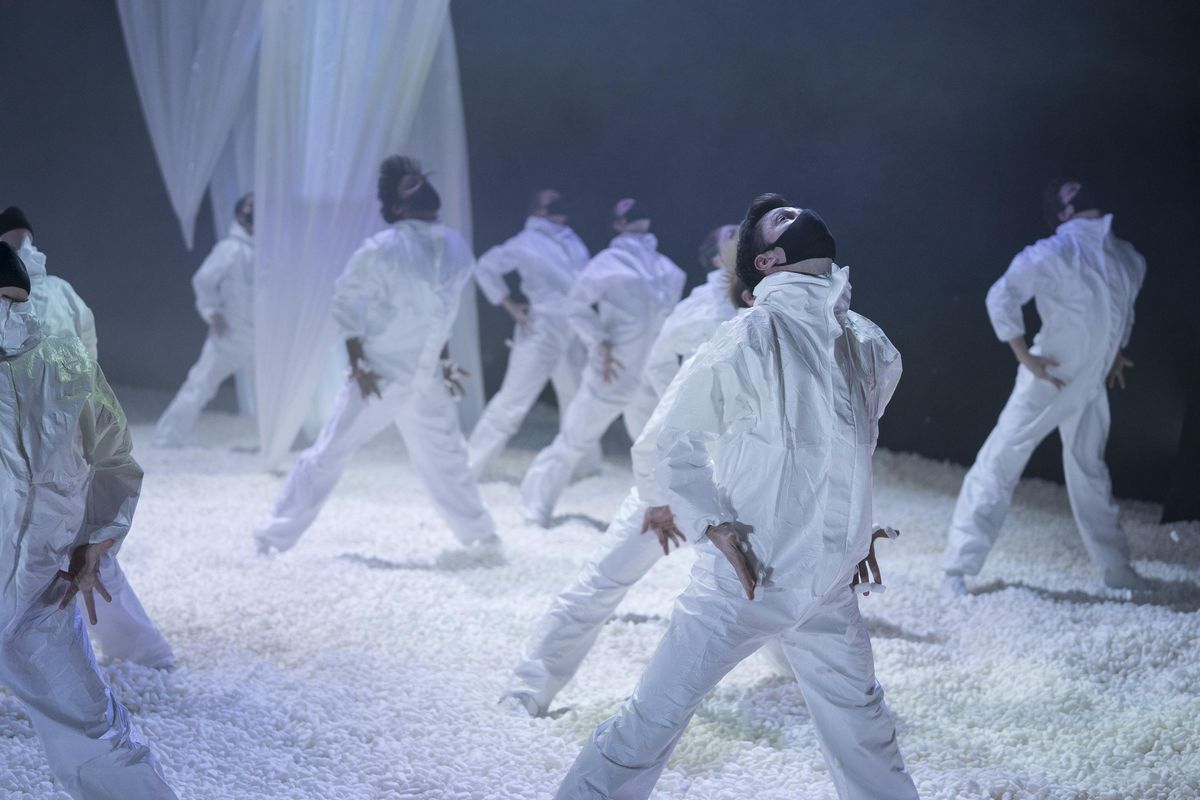
South African–born choreographer Andrea Schermoly is no stranger to challenges, and she's often on the move. Among an extensive portfolio of productions created for companies worldwide, she has also tackled reimaginings of Martha Graham's Appalachian Spring and Judith as one of three artists in residence at Louisville Ballet.
Schermoly is also no stranger to film, having created a digital short called In Passing for the Ashley Bouder Project in 2015. But her most recent film project for Louisville Ballet, a new version of the iconic Rite of Spring, breaks ground—or, rather, ice—with its fresh, arctic take on the Stravinsky masterwork.
Pointe spoke with Schermoly about this newest work for the company's digital Season of Illumination, discussing the challenges of Zoom rehearsals and the ballet's arctic inspiration.
How did this project come about?
Robert Curran, Louisville Ballet's artistic director, presented the idea over a year ago, but I started working on it last spring. And that's mostly in terms of talking. My brother, Joe Schermoly, did the set design, so I spent a lot of time discussing the piece with him, our lighting designer Jesse AlFord and Mikelle Bruzina, who's one of our head ballet mistresses.
The piece was initially proposed as part of a Stravinsky triple bill by Louisville Ballet's three resident choreographers featuring Petrushka, Firebird and Rite of Spring. It would have been a theater piece had it not been for the pandemic. Eventually, Rite will transfer to the stage, so I wanted it to live in an "80 percent land," where I wouldn't have to change it all over again. It was pretty daunting, but a great challenge.
What was the rehearsal and production process like?
It was quite a lengthy and disjointed process. I spent the first couple months workshopping with Louisville Ballet Studio Company, which helped lay groundwork for the movement. I then retaught the material to the company before moving forward with them on the second half. We had about three or four hours a day to work, including breaks for cleaning the studios, and protocol was very strict. We didn't touch—everyone stayed within their eight-foot boxes.
We then had two and a half weeks to film. Some of the scenes took five, eight, 15 takes—the costumes would rip, or we'd have to run out every 15 minutes for studio ventilation. It was crazy how much work everyone put in just to keep that set alive. The film production team, KERTIS, was awesome!
A lot of the rehearsals were on Zoom, even the Chosen One's solo, which we started in dancer Ryo Suzuki's kitchen. I had to warn him about kicking the fridge! There were also four studio company members in the cast. They were on their computers every rehearsal leading up to the filming—we didn't see them in the studio until two days before. It was very impressive to see them integrate themselves so quickly into that environment.

You took more of a sci-fi spin with your reimagining. Rite is a monumental piece that has been done by many choreographers—how did this affect your concept?
I didn't want to plant the piece anywhere that felt instantly related to a time and place; it could apply to anyone. I'd also seen a short film (A Journey That Wasn't) about a stray albino penguin that had been ousted by its tribe. I remember thinking it was such a strange parallel to Rite, and I liked the starkness of the terrain. It felt vast and scary and beautiful, and not something that's seen too often onstage.
I love that it became sci-fi. The music is so eerie, huge and violent, and I felt like the tribal sense could still be captured in that icy environment. The aim was to make an immersive futuristic world that would look completely different and feel cold, but still have a warmth about it that would be inviting to watch.
What would you hope viewers might glean from watching Rite of Spring?
The response so far has been that it's hopeful. But underneath that is the sacrifice, and it's heartbreaking. It's imminent if you're in a viral plague that people will be hurt, but the idea of abandoning somebody is especially painful. In all the Rite stories someone is sacrificed for the tribe's greater good. But I'd hope we'd understand that we can take most of us along—that it doesn't have to be an abandonment of sick and non-wealthy people. I really wanted to capture the randomness of it all; the Chosen One could have been anybody.

As a choreographer, what did you learn during this project?
A lot—with restrictions actually comes a lot of opportunity. I think we get stuck in boxes of what we like to show or what we think our strengths are. Not being able to touch was actually a great gift. I got to ask "What else?"
I also learned that I can create just by speaking. It was hilarious using Stravinsky online with 17 people, trying to keep the counting the same because of the internet connection! But dancers are so smart, and anything you impart comes out tenfold better.
What's next?
I'd love to make another dance film! Video can expose people to dance in a way they haven't seen. When you see the dancers up close, you get a different sensation of what dance can be. Overall, it's been amazing to see that when you have people who really want to keep creating, anything is possible.
But at the moment, I want to come back to the theater—we all miss it!
Louisville Ballet's Rite of Spring is available through May 31. Viewers can purchase digital tickets via the company website.
from Pointe https://ift.tt/3bxpBvT

ليست هناك تعليقات:
إرسال تعليق